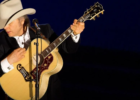Country Rock
Rock music and country music, each cherished by many, have a curious relationship as two distinct genres that haven’t fully intertwined.
While there have been notable instances of blending, like Willie Nelson’s “Always On My Mind” and The Eagles’ “Desperado,” the complete merger remains elusive. However, a handful of artists in recent decades have successfully married new forms of country with rock, birthing an entirely unique musical genre.
The Birth of Country Rock
Gram Parsons is credited as a pioneer of country rock, establishing The International Submarine Band, which ingeniously fused folk and country elements with bluegrass instruments such as the banjo, fiddle, and pedal steel guitar.
The Nitty Gritty Dirt Band’s 1972 album “Sweetheart of the Rodeo” epitomized this fusion, sparking the first commercial wave of country-rock fusion. Seatrain, another influential group, added jazz influences to the mix, releasing three albums before disbanding after Clarence White’s tragic death in 1973.

Instruments of the Genre
In the realm of country rock, band members often wear multiple hats, serving as both songwriters and musicians. As such, they frequently wield a variety of instruments, including bass, drums, electric guitar, electric mandolin, and pedal steel guitar. Additionally, the piano and violin are common accompaniments, enriching the genre’s sonic landscape.
The Legacy of Country Rock
Country rock experienced a meteoric rise to prominence in the early 1970s, swiftly ascending to become one of America’s most beloved musical genres.
Today, its popularity remains steadfast, standing as a testament to its enduring appeal. From its humble origins as a blend of country and rock to its current status as a cornerstone of American music, country rock has embarked on a remarkable journey, earning a cherished place in the hearts of music enthusiasts worldwide.

